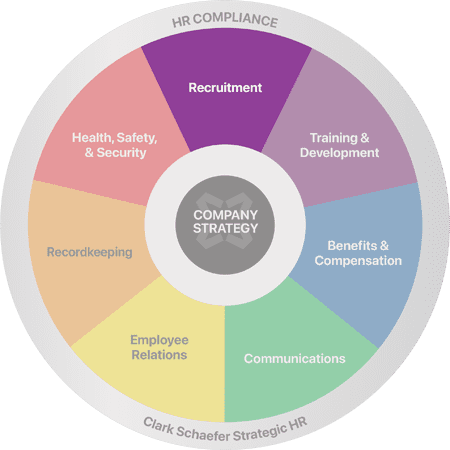At-Will Employment Termination Risks
Last Updated on July 28, 2023 / HR Compliance

HR Question:
We’ve got a team member who just isn’t working out. The problem is we haven’t taken all of the right steps in documenting the issues, but we’re an at-will employer – can’t we just terminate anyway? What are the risks of at-will employment termination?
HR Answer:
The term “Employment At-Will” is a familiar one for most employees and companies. So, what exactly does this term mean? Conceptually, it means either the employer or the employee is free to end the employment relationship at any time, with or without notice or cause. A majority of employers throughout the United States establish at-will relationships with their employees, either as the result of the law, existing policy, or a combination of both. However, does this mean it gives an employer the freedom from risk should they decide to terminate an employee on the basis of the at-will employment relationship? Not exactly.
At-Will Termination Risks
As a best practice, an employer should not completely rely on an employee’s at-will status to defend a termination decision. Even though good cause is not needed to end an at-will employment relationship, most employers typically have a valid reason for termination, such as continual poor performance.
Prior to terminating an employee under at-will circumstances, keep in mind that it’s not uncommon to receive a retaliation claim, a discrimination claim, or a similar action.
Additional justification is expected when putting an individual out of their job, whether it has to do with the person’s performance, violation of company policy, or another workplace issue entirely. Providing justification can reduce the time and resources related to managing a termination.
Protect Yourself with the Basics
It’s important to establish best practices on the front end, and consistently follow them to reduce your at-will termination risks. Ideally, no one should be surprised by a termination notice. Considering all of the dynamics that are usually in play when it comes to terminations, the best way to approach an at-will termination is to follow solidified HR practices from the beginning. As the age-old HR saying goes “document, document, document!”
Having clearly defined procedures, training, practices, and consistent follow-through allows an employer to navigate the waters of risk when it comes to at-will terminations.
If issues have not been documented, there are a few things to consider:
- If progressive disciplinary action is listed in the employee handbook, it’s important to follow it consistently.
- Before taking steps toward termination, consider the approach. Are these actions in line with the company’s culture? Are they representative of the company’s values?
- It is okay (encouraged, even) for HR to press the “pause” button on the situation and require the necessary documentation before authorizing a termination.
Steps to Reduce Employer Liability and Risks
There are easily established processes and policies that can be implemented to reduce liability and risk throughout the employee’s life cycle. We recommend that employers:
- Use disclaimers in the new-hire process (offer letters and new-hire orientation) and require signed acknowledgments.
- Clearly outline employment expectations.
- Implement a progressive discipline policy.
- Adopt a grievance procedure.
- Train supervisors on how to properly document disciplinary actions.
- Include human resources in the disciplinary process.
- Review situations carefully and seek legal guidance prior to making adverse employment decisions.
Culture and Morale Matter
It’s important to consider all of the issues that go along with terminating someone who is employed on an at-will basis. Parting ways with an employee, justified or not, can have an impact on your culture and morale. Handling terminations in a manner that is consistent, ethical, and shows dignity and respect for the individual involved plays a critical role in how your remaining employees view the company’s leadership.
There is always a risk in termination. It is always good practice to involve your attorney before pulling the final trigger to ensure support if a legal issue may arise.
Thank you to Julie Knight, SHRM-CP, for contributing to this edition of our HR Question of the Week!
Let the HR experts at Clark Schaefer Strategic HR help you navigate the employment law minefield. Check out our HR Compliance and Recordkeeping page to learn more, or contact us directly!







